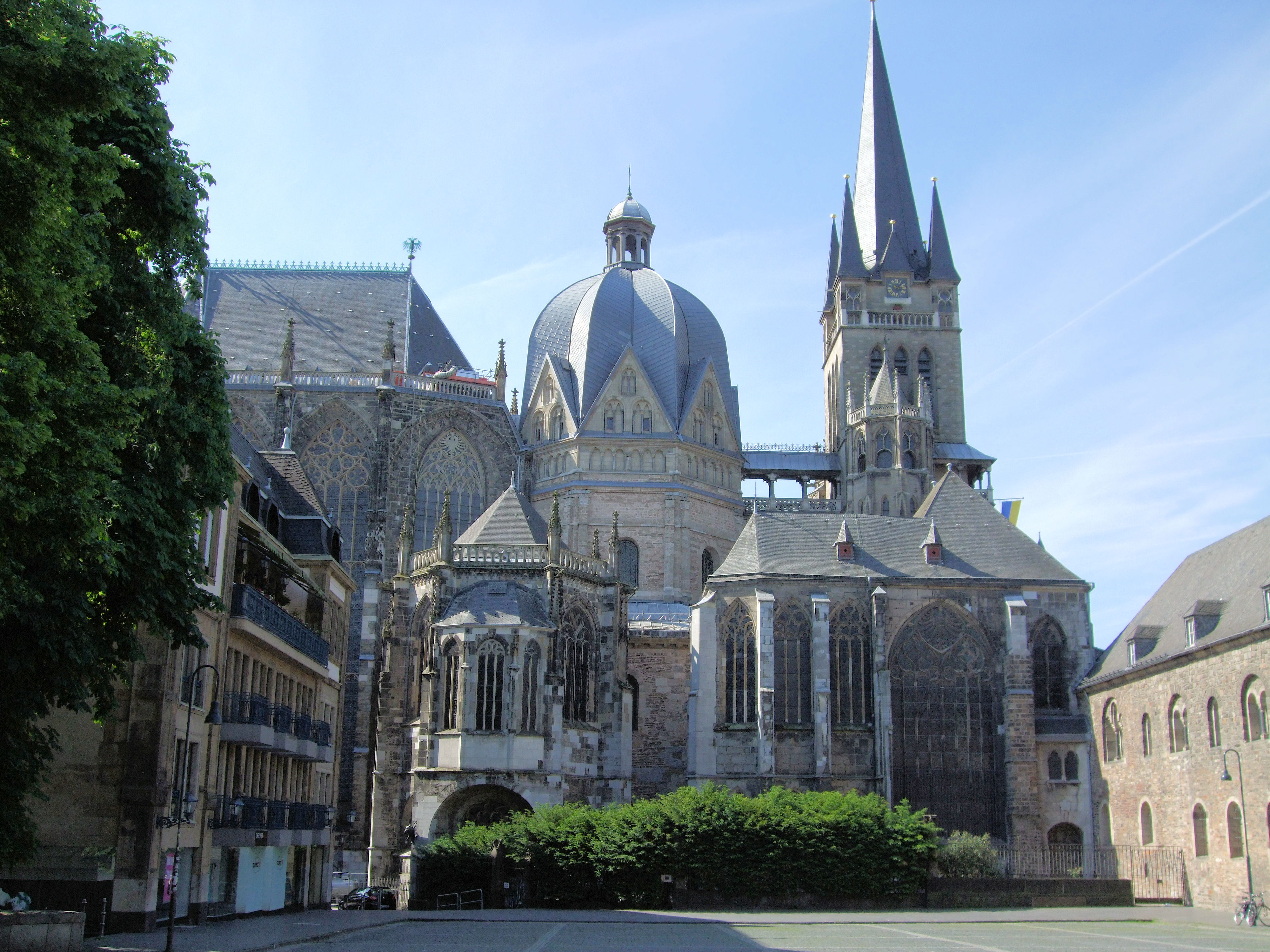It appears as though I am once again talking about a religiously affiliated work of architecture.
I promise I am not trying to make this a trend in my writings.
Many extant and prominent structures and buildings from past historical periods and communities hold religious significance, so it is difficult to not bring faith up in the conversation.
While this week’s post focuses on a Christian chapel, it also heavily deals with the concept of patronage.
Financially supported by Charlemagne, or Charles the Great, as part of his palatial complex, the Palatine Chapel was designed by Odo of Metz, an Armenian architect who was trained in the byzantine tradition. It was most likely built by Lombard masons with stones spoliated, or reused, from nearby ancient Roman structures.
This structure is part of the Carolingian Renaissance chronology. This period occurred roughly between the years 768 and 900 AD in central Europe.
Like many other Carolingian works of architecture, the Palatine Chapel took inspiration from the Early Christian and Byzantine buildings Charlemagne visited through his travel and pilgrimage. Specifically, while traveling to Italy to get crowned as the new emperor of the West, Charlemagne visited the Basilica of San Vitale, a late antique sixth century church in Ravenna.

Many see the Palatine Chapel as a scaled down version of San Vitale.
That being said, the Palatine Chapel shares many similarities with San Vitale not only in its ground plan, but also in the decorative program.
The central form of the chapel is an octagon, which fractures into a larger sixteen-sided polygon. With square and triangular bays covered by barrel and groin vaults, the interior volume is supported by a cloister vault. The semicircular arches of the main floor utilize polychrome masonry, the use of different colored bricks to create decorative patterns and geometric designs. Also, sixteen marble columns from the Palace of the Exarchs in Ravenna were reused in the arcade of the gallery.
As for decoration, the chapel features a lower portion made out of marble revetment, that was brought from the Mediterranean or spoliated from Roman works, and an upper portion displaying mosaics. This bifurcation was a common design pattern in byzantine architecture.

Located in the Carolingian capital of Aachen, Germany (also known as Aix-la-chappelle), the chapel functioned as a Christian place of worship in addition to serving as the seat of Charlemagne’s power.
The structure housed Charlemagne’s throne, which was set on the gallery level on axis with the altar. This placement symbolized a link between the emperor and Christ, demonstrating Charlemagne’s power and great status.
Wow, this is absolutely beautiful. It is something about religiously affiliated works of architecture that hold a different aura of exquisiteness and beauty. My brother was actually able to visit this chapel when he got the chance to study abroad earlier in his college experience, pre-Covid. I remember him telling me how incredible the ceiling was, and from your inserted pictures, I can say he was right!
Honestly, I enjoy when your post is about religious structures because I do not hear them get praised as much as they should. It is also cool to learn about different religions as well. When I first saw this building the outside reminded me of the infamous disney movie logo. I wish they still made buildings like this now everything is so modern so seeing infrastructures like this is really refreshing.
I really enjoyed your blog post this week! I thought the way it was designed and made was very interesting. I have always loved looking at architecture, but I never think about how it is made, or how it is designed. I have really enjoyed reading your posts!
Originally when I look at this piece of architecture it seems as though it is right out of a fairytale or a Disney movie. The strong blue accents on the outside mixed with the strong gold interior with the beautiful dome just represents lavishness. It makes sense that a lot of your posts have been about religious places because a lot of these spots receive the most attention to inspire the masses.